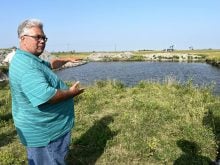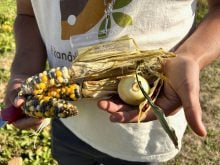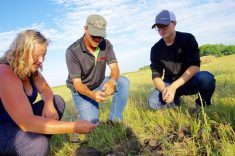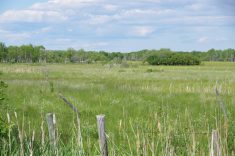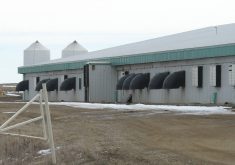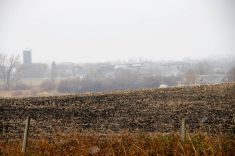It was in the early 1970s I first saw the flocks of medium-sized birds flowing out from above the treetops and spilling into the clear early evening sky above the Manitoba Escarpment.
What I was seeing was the late-summer migration of the common nighthawk. Over the years I have noted a distinct reduction in the number of birds.
Nowadays, my vantage point for this seasonal display has shifted to our farmland near the base of the escarpment. On the evening of August 23, I was happy to witness a formidable display of aerial acrobatics. The nighthawks came in small numbers, four or five together in view at a time just above the treetops. They floated up and down over the grassland field of hay bales in a southeasterly direction. I was moving and stacking bales, but I had to stop to admire the show.
Read Also

Roundup retraction makes public trust ripples
A foundational study on glyphosate safety was recently retracted, while Roundup maker Bayer has already said it may ditch the key agricultural herbicide after lawsuits piled up.
As well as my own migration observations showing a decrease in nighthawk numbers, nesting surveys and field research show only 10 per cent of eggs yield a fledgling at fall migration. Native prairies and forage lands are important bird habitats. Changing land use are widely thought to be contributing to the population decreases.
We acquired a nearby native grassland in 2019, recognizing that its value to wildlife and prairie landscape was in danger of conversion. I knew firsthand that the 130 acres had never seen a field tool other than a mower and grazers. The remaining thirty acres of the quarter section contain a parcel of mature hardwood forest and another of about the same size of fire-generated aspen parkland.
The entire quarter section will be cross fenced with more than ten different paddocks of different quality and composition all providing access to water troughs at strategic locations. A pipeline is being installed to push water from a well using a 24V piston pump to send water on demand. Solar panels at the well site will power the pump and energize the fence.
Wildlife are part of our venture as white-tailed deer and wapiti are known to visit. In fact, our early attempt to do the 2024 MFGA bird survey was delayed by the presence of five wapiti females and one young away from the adults. Finally, as we waited, the animals moved to an adjoining wooded area with three young of year in tow.
The two-wire cross-fence is low enough for the adults to jump over and high enough for the young to crawl under. Similar accommodation will be made at known trail locations on all sides of the perimeter fence. Bears, wolves, coyotes, and red fox are known visitors. The MFGA bird survey revealed the presence of at least thirty species. The insect world can be varied on these undisturbed forage lands especially with the different soil types from high organic peat soils to sandy loam and grey clay.
Since the Scott Creek spills over its banks every other year, the silt accumulation is quite apparent in the northeast corner. This is where tall reed grass has taken over some twenty plus acres. The remainder of vegetation is composed of brome, timothy, Kentucky blue grass, and some unidentified native grass species. Two types of clovers are present, pink, or white and the taller red, wild pea vine and cream colored vetchling. I added some Cicer milk vetch as well as bird’s foot trefoil and alfalfa. Snowberry brush abound in most areas that have not been mowed recently, as well as narrow-leaved meadowsweet.
Eventually adding our bison to this grassland would close the loop on the evolution of this grassland and help enhance the plant diversity sought after in a healthy land.
Our pasture rejuvenation experience has been accelerated via winter bale grazing. Amazing yield improvements and species diversity can happen with this regenerative practice. As soon as there is sufficient snow cover of 15 to 20 centimetres on the rested pasture and the bison can eat snow at will, I roll out enough large round bales – usually six or seven bales – to keep the herd content for almost a week.
I try to cover different areas of the land laying two bales of different or similar quality, legume-grass mix versus grass only in nearby proximity. The herding instinct in bison is very strong so having almost 100 metres of hay close together allows all participants a place to eat and the fare is varied with two different fodders.
If at first the mix is not tasty enough, the herd migrates to the next two rows of hay just rolled out. By the end of the winter grazing, almost every area has received at least one treatment of manure, urine and waste hay with many hay seeds. By mid-June the next year, the pasture is very green.
Keeping the landscape in its present form is important to favour the wildlife that rely on it. Providing some nitrogen-fixing legumes can increase the soil fertility and add some diversity to the forage. I would like to choose some appropriate native legume species as well.
My neighbour to the east found a bison skull on his land just a few hundred metres east of our peat lands. There are no telltale clues to cause of death, but we can guess that the animal died some two or three centuries ago.
This treasured find alone tells me bison are at home here today.



